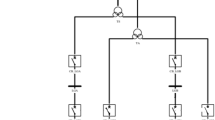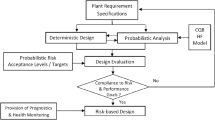Abstract
Level-1 PSA provides an integrated picture of the plant safety, incorporating all the design features, operational failure data, operational practices and maintenance information. The nuclear power plant operations are governed by the Technical Specifications, which specify Surveillance test frequencies, amongst other limiting condition of operations. With the detailed plant safety assessment having been conducted using the state of the art methodologies of PSA, there is a potential for evaluating the impact of varying the Testing frequencies on the plant risk and cost metrics. However, the complexity of the study is so vast that any optimization within the PSA framework, with change of input variables parametrically, is not feasible. In this paper, a multi-objective approach to optimization of surveillance test frequencies of two systems is studied using genetic algorithms, with inputs taken from the Level-1 PSA study of the 540 MWe Indian Pressurized Heavy Water Reactor.





Similar content being viewed by others
References
Apostolakis GE, Chu TL (1980) The unavailability of systems under periodic test and maintenance. Nucl Technol 50:5–15
Bajaj SS, Gore AR (2006) The Indian PHWR. Nucl Eng Des 236:701–722
Bajaj SS, Mohan N, Guptan R, Vijaya AK, Srinivas G, Chatterjee D, Hari V (2005) Level-1 probabilistic safety assessment of Tarapur atomic power project (540 Mwe). Nuclear Power Corporation of India Ltd, Mumbai
Deb K (2002) Multi-objective optimization using evolutionary algorithms, 2nd edn. John Wiley & Sons, Ltd, New York
Deb K (2008) A robust evolutionary framework for multi-objective optimization. In 10th Annual Conference on Genetic and Evolutionary Computing (GECCO) Atlanta, pp. 633–640
Deb K, Tiwari S (2008) Omni-optimizer: a generic evolutionary algorithm for single and multi-objective optimization. Eur J Oper Res 185:1062–1087
Deb K, Pratap A, Agarwal S, Meyarivan T (2002) A fast and elitist multiobjective genetic algorithm: NSGA-II. IEEE Transac Evolutionary Comput 6:182–197
Mosleh A (1993) Procedure for analysis of common cause failures in probabilistic safety analysis. NUREG/CR-5801, US Nuclear Regulatory Commission
Polowski JP (1999) Rates of initiating events at United States nuclear power plants 1987-1995, NUREG/CR-5750, US Nuclear Regulatory Commission
Wu JS, Apostolakis GE (1992) Experience with probabilistic risk assessment in the nuclear power industry. J Hazard Mater 29:313–345
Yang JE, Hwang MJ, Sung TY, Jin Y (1999) Application of genetic algorithm for reliability allocation in nuclear power plant. Reliab Eng Syst Saf 65:229–238
Acknowledgment
I wish to acknowledge the support by Nuclear Power Corporation of India Limited in the pursuit of research on the subject.
Author information
Authors and Affiliations
Corresponding author
Rights and permissions
About this article
Cite this article
Srinivas, G., Verma, A.K., Srividya, A. et al. A level-1 PSA based systemic approach to optimal technical specifications of safety systems in nuclear power plants. Int J Syst Assur Eng Manag 2, 234–240 (2011). https://doi.org/10.1007/s13198-011-0077-2
Received:
Revised:
Published:
Issue Date:
DOI: https://doi.org/10.1007/s13198-011-0077-2




